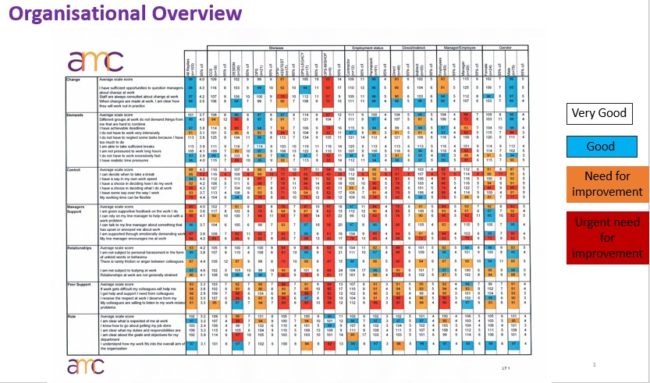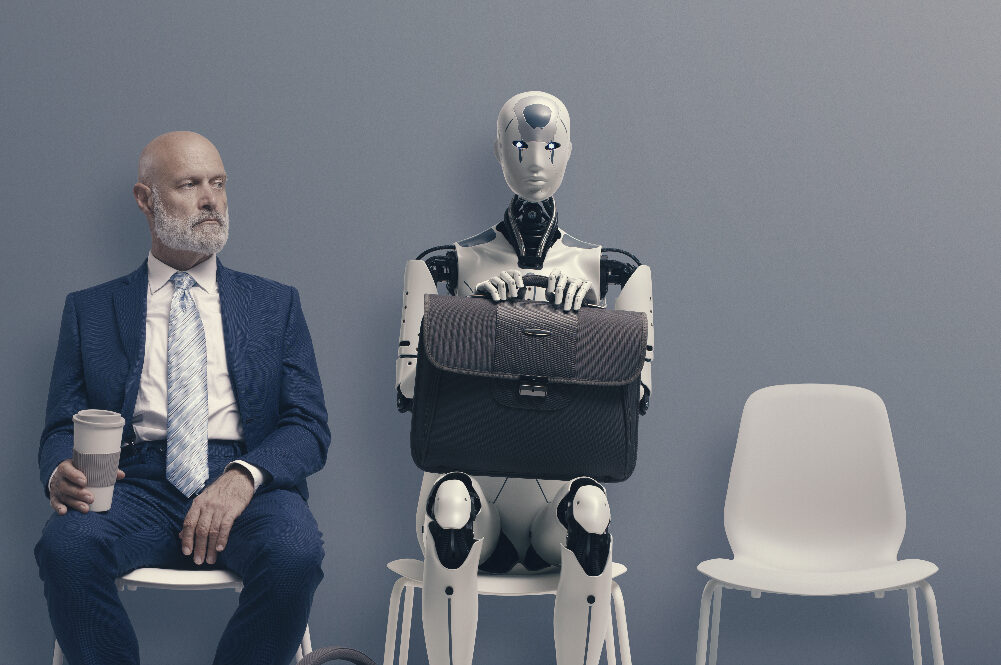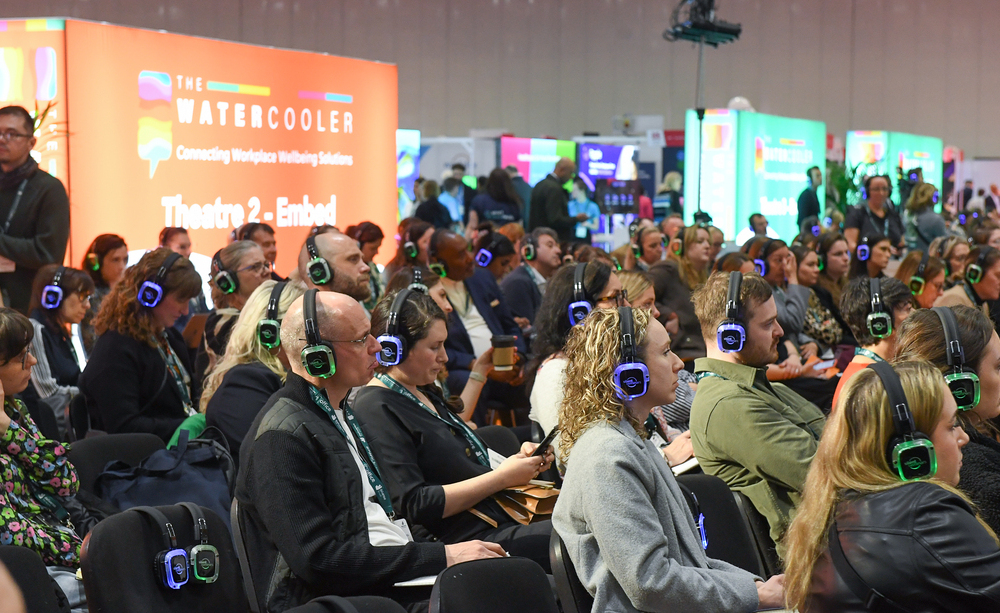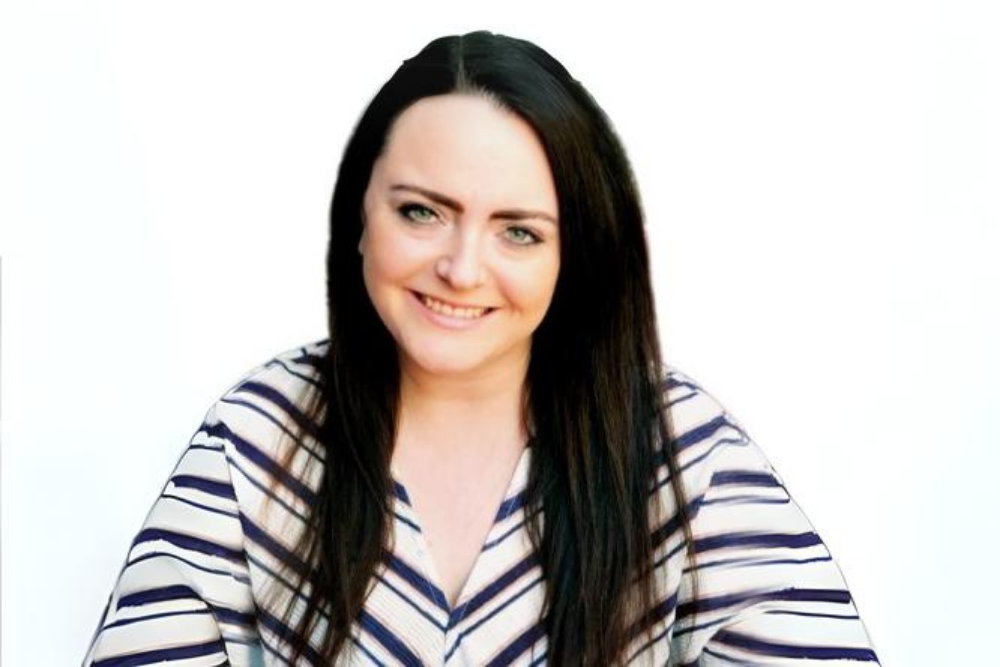Employers in the UK with more than five employees have a legal duty to protect their colleagues from stress at work by doing, and acting on, a stress/wellbeing risk assessment. As millions experience high levels of work change as a result of the Coronavirus pandemic, this is more relevant than ever.
Yet many companies do not undertake this kind of risk assessment, even though the Health and Safety Executive (HSE) lays out clearly 35 questions that need to be answered as part of this process.
Ann McCracken, Director of the stress, wellbeing, resilience and training provider AMC Consultancy, believes that this is because employers don’t know how to interpret the insights that the HSE’s questions are designed to provide.
She says: “This is a shame because it has the potential to be a very powerful tool. We want people to understand the importance and relevance of doing a risk assessment for stress throughout the organisation. This will help them pinpoint where people are really happy and working well and also where people are having issues. This then enables us to provide bespoke training solutions as one size does not fit all”.
Identifying specific needs
To help employers comply with their legal responsibilities and get the most from a stress and wellbeing risk assessment, Ann’s company has devised a questionnaire. This is based on the 35 questions set out in the management standards of the HSE’s guidance. But it also includes questions tailored to each specific organisation.
AMC Consultancy has also developed an Individual Risk Assessment based on the HSE Management Standards which is for 1:1 consultations.
Insights from the risk assessments are clearly laid out with colour coded identification of “hot spots” and “great spots”. These show how people are feeling at a department level and what the key issues are relating to work.

The graphic above illustrates how clear it was that something was amiss with this organisation which AMC Consultancy helped. In one specific department – with almost the whole row of responses showing red – employees had nothing good to say about the organisation they were working for.
Once this “hot spot” had been identified, Ann and her colleagues were able to help the organisation to find a way forward. It transpired that this particular group of employees had been deemed to be ‘misfits’. They were all disgruntled employees that had been put together to bide time until retirement.
Ann was able to advise the company on how to work with these long-standing employees, whose skills and experience could be invaluable if they were unlocked.
Ann explains that, in order to be truly representative, each individual within an organisation is supposed to provide responses to the HSE’s 35 questions. Instead, many organisations take a blanket approach – just as they might with a physical health and safety risk assessment. This means that they don’t gain the true insight they need as people are very reluctant to admit that they aren’t coping.
Ann takes a much more personalised approach that delivers more accurate insights. She says: “Sometimes organisations tell us that senior management will conduct their own questionnaire. But they have to remember that employees don’t always trust their managers enough to give them an honest response”.
“We get the answers that are real because we send an independent, anonymous survey to each individual in an organisation. We get an 80-90% response rate, whereas most organisations get a 50-60% response rate to their own questionnaires. The colour coding of insights also makes them very easy to interpret”.
Understanding how the pandemic impacts work related stress
Ann’s consultancy also has a separate pandemic questionnaire to help companies understand the impact of the pandemic on their people.
The HSE’s questions around communication, perceptions of demands of the job and the amount of control that people have of their work are particularly relevant. She says: “On the one hand, control is going to be greater because people working from home have more control of their time. But managers will have a lot less sense of control, so they’ll have to find different ways of working”.
This is the kind of training that AMC Consultancy can provide once the need has been highlighted.
Change is another factor that the HSE guidance focuses on. Ann is expecting this to be something organisations will need help with. She explains: “There’s a lot of unrest and uncertainty as a result of the pandemic, but many people don’t handle change well”.
“There are many psychological tools you can use to help people manage change, develop new skill sets and new ways of working. That’s part of what I am able to offer.”
“Different organisations have such different needs and people within them have such different needs. As trainers we go in and elicit what their problems are. If we conduct a stress/wellbeing risk assessment the training is more effective as we can pinpoint what’s needed.”
“This not only means that the training we offer will have more impact and be more cost effective – it also means that the employer is fulfilling their legal requirement.”
The message came through loud and clear from my exclusive interview with Sir Ian Cheshire, Chairman Barclays UK: Don’t waste a good crisis. Make sure mental health and wellbeing are built into your recovery plans.
Conducting a stress / wellbeing risk assessment – to pinpoint where things are working well as well as where people are having issues – seems like an excellent first step on the road to recovery.
You can find out more about AMC Consultancy’s stress / wellbeing risk assessments, as well as the stress, wellbeing and resilience training courses they provide for managers and colleagues here.
About the author
Claire Farrow is the Global Director of Content and Programming for the Mad World and Make a Difference Summits. She also drives the content for Make A Difference News. Claire is on a mission to help every employer – large, medium and small – get the insight, inspiration and contacts they need to make real impact on workplace culture, mental health and wellbeing in their organisation. She has been freelance for more than 15 years. During that time, she has had the honour of working with many leading publishers, including the New York Times
















